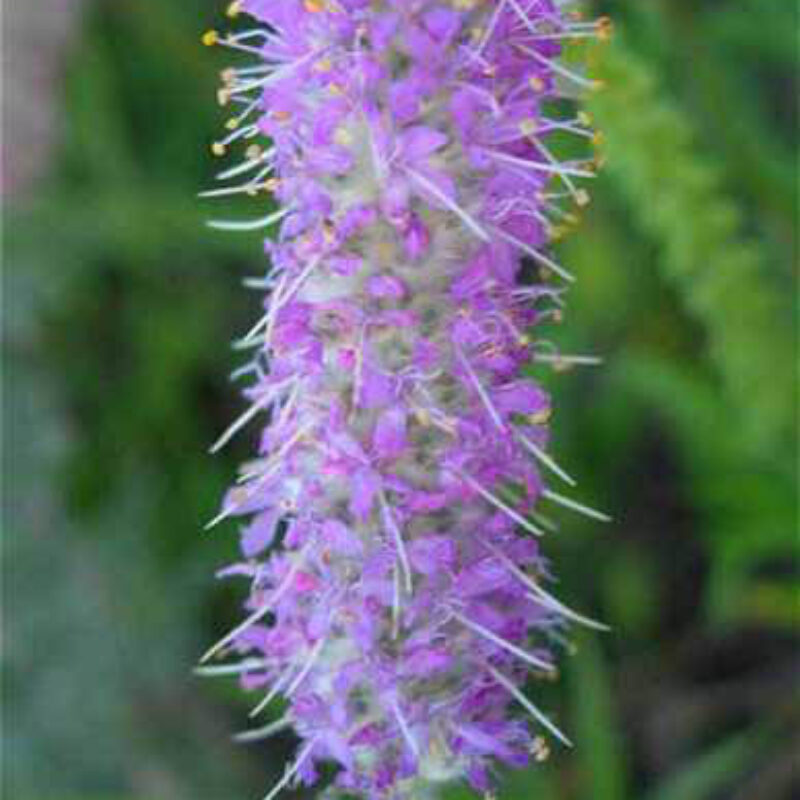Silky Prairie CloverDalea villosa
Uncommon in the wild, Silky Prairie Clover grows in clumps with leaves that are smaller and more numerous than Purple Prairie Clover. Blooming in July and August, it thrives in partial to full sun and dry soil.
USDA symbol: DAVI
General Information
| Plant Type | Forb |
|---|---|
| Height | 1 to 2 feet |
| Light Exposure | Sun |
| Soil Moisture | Dry |
| Bloom Color | Purple |

Tolerances
| Flooding / Inundation Tolerance | Low |
|---|---|
| General Resilience | 6 |
| Salt Tolerance | Unknown |
| Stress Tolerance | Drought Tolerant |
Pollinator Value: High
| Bloom Months | July to August |
|---|---|
| Larval Host of | Bees |
| Specific Pollinators Hosted | Numerous bee species |
| Pollinator Benefit | Insect Pollinated, Provides Nectar, Supports Generalists |
Project Planning
| Project Type | Bee Lawn |
|---|---|
| Coefficient of Conservatism | 9 |
| Herbivore Sensitivity | Low |
| Lifespan | Perennial |
| Rate of Spread | Slow |
| Soil Stabilization | Deep |
| Vegetative Reproduction | Clonal |
Range
| County | Anoka, Chisago, Clay, Crow Wing, Dakota, Goodhue, Hennepin, Kittson, Morrison, Norman, Polk, Ramsey, Rice, Scott, Sherburne, Wabasha, Washington |
|---|---|
| Ecoregion | Driftless Area, Lake Agassiz Plain, North Central Hardwood Forests, Northern Glaciated Plains, Northern Lakes and Forests, Northern Minnesota Wetlands, Western Cornbelt Plains |
| Approximate Eco Province | Eastern Broadleaf Forest, Laurentian Mixed Forest, Prairie Parkland, Tallgrass Aspen Parklands |
